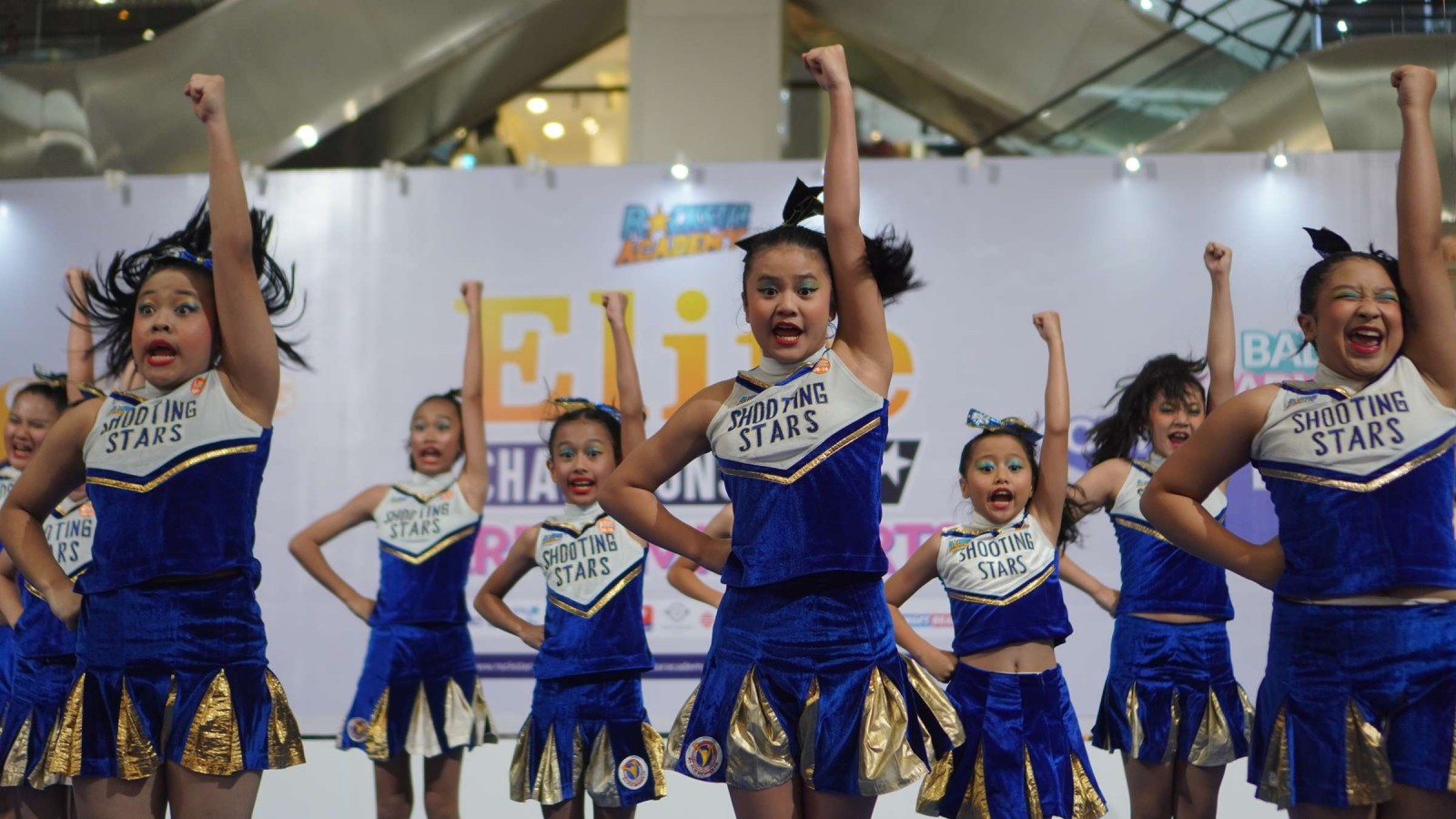Is Cheerleading a Sport? The Physical and Skill Required

Cheerleading has been a topic of debate for decades. While it involves rigorous training, athleticism, and skill, many still question whether it qualifies as a sport. The controversy stems from differing definitions of sports and the evolving nature of cheerleading itself.
Some argue that because it doesn’t always involve direct competition, it shouldn’t be classified as one. Others point out that the level of skill, physical demand, and risk of injury make it just as challenging than traditional sports. So, where does cheerleading stand in the world of athletics? Let’s break it down!
Is Cheerleading a Sport?
The definition of a sport, according to the Oxford Dictionary, is "an activity involving physical exertion and skill in which an individual or team competes against another or others for entertainment."
By this definition, cheerleading appears to fit, especially when considering competitive cheerleading, which involves routines judged on difficulty, synchronization, and execution.
Competitive cheerleading requires strength, flexibility, endurance, and precision. Athletes perform stunts, tumbling passes, and intricate formations that demand coordination and teamwork.
In contrast, sideline cheerleading primarily supports sports teams and does not involve direct competition, leading to some confusion about whether cheerleading as a whole should be classified as a sport.
However cheerleading is considered to have no competitive element, hence there is no competition against each other. Cheerleading also aims to cheer in support or motivation of the audience and their team.Therefore, cheerleading is not categorized as a sport especially by the NCAA.
Why Cheerleading Is Not Considered a Sport
Despite the intense physical and mental demands of cheerleading, many organizations and governing bodies do not officially recognize it as a sport. Here are some key reasons:
1. Lack of Official Recognition by Sports Organizations
While competitive cheerleading is recognized by some organizations, it is not classified as an official sport by the NCAA (National Collegiate Athletic Association). This is due to cheerleading’s primary function as a support activity rather than a competition.
2. Varied Types of Cheerleading
The presence of both sideline and competitive cheerleading complicates its classification. Since sideline cheerleading primarily focuses on crowd engagement rather than direct competition, many do not see it as a sport. However, competitive cheerleading aligns more with traditional sports criteria.
3. Lack of Standardized Rules and Governance
Unlike sports with universally accepted rules and governing bodies, cheerleading varies across regions and organizations. This inconsistency makes it difficult to classify it definitively as a sport.
4. Historical and Cultural Perception
Cheerleading originated as a means to encourage school spirit and support athletic teams. Its early association with entertainment rather than competition has led to ongoing challenges in gaining recognition as a sport.
Arguments Against Cheerleading as a Sport
Many argue that cheerleading does not meet the criteria of a sport. This opinion is certainly based on several points from the characteristics of cheerleading itself. Here's why:
- Primary Purpose is Support: Sideline cheerleading exists to encourage athletes in other sports rather than compete directly.
- No Universal Competitive Structure: Unlike basketball, soccer, or gymnastics, cheerleading lacks a universally recognized league or championship system.
- Scoring and Judging: Some critics argue that cheerleading competitions are too subjective since judges award points based on performance quality rather than clear, measurable achievements like goals or points scored in traditional sports.
- Safety Regulations: Many sports have strict safety protocols and governing bodies enforcing them, whereas cheerleading varies widely in safety measures depending on the organization.
Arguments for Cheerleading as a Sport
On the other hand, many strongly believe that cheerleading should be classified as a sport because:
- It Requires Athletic Ability: Cheerleaders train like athletes, building strength, flexibility, and endurance to perform complex stunts and routines.
- It Involves Competition: Competitive cheerleading teams go head-to-head in high-stakes competitions, where teams are judged on skill execution, difficulty, and synchronization.
- Risk of Injury is High: Studies show that cheerleading has one of the highest rates of sports-related injuries, comparable to football and gymnastics.
- It Develops Teamwork and Discipline: Cheerleading requires extensive practice, coordination, and strategic execution, just like other recognized sports.
The Physical Demands of Cheerleading
Regardless of classification, cheerleading is an intense physical activity. Here are some key physical demands of the sport:
1. Strength and Conditioning
Cheerleaders must have strong core muscles, arms, and legs to lift teammates, execute tumbling passes, and maintain stability during stunts. Strength training is a fundamental part of cheerleading workouts.
2. Flexibility
Being flexible is crucial for executing high kicks, splits, and complex tumbling moves like back handsprings. Cheerleaders dedicate significant time to stretching to enhance their range of motion and reduce the risk of injury.
3. Cardiovascular Endurance
Cheerleading routines can last two to three minutes of high-intensity movement, leaving no time for rest. From jumps to flips to stunts, athletes must sustain their energy while keeping their movements sharp and engaging. A well-conditioned cheerleader needs the same level of endurance as a soccer or basketball player.
4. Coordination and Precision
Timing is everything in cheerleading. Whether executing a stunt or syncing movements with music, every move must be precise to ensure safety and performance quality. Hours of practice go into perfecting formations, arm motions, and synchronized jumps.
5. Balance and Agility
Cheerleaders must move quickly and stay balanced while performing intricate stunts or flipping through the air. Agility training helps them react fast, land safely, and avoid injuries. Flyers, in particular, must master body control to maintain their positions high above the ground.
Health Benefits of Cheerleading
From building strength to improving mental well-being, cheerleading offers a variety of health benefits that can positively impact athletes both on and off the mat. Let’s dive into some of the top health benefits of cheerleading and how this dynamic sport keeps participants in top shape.
1. Full-Body Strength
Cheerleading requires a strong core, arms, legs, and back to perform stunts, jumps, and tumbling passes. Whether you’re lifting teammates, holding a position mid-air, or flipping across the floor, every muscle group is engaged. Strength training is a huge part of cheer practice, helping athletes build power and endurance over time.
2. Improves Flexibility
Flexibility is key to avoiding injuries and improving performance in cheerleading. Cheerleaders regularly stretch to increase their range of motion, which helps them perform high kicks, jumps, and tumbling moves effortlessly.
3. Boosts Cardiovascular Health
Cheerleading routines are high-energy, fast-paced, and require non-stop movement for two to three minutes—that’s a serious cardio workout! This improves heart health, strengthens the lungs, and increases overall endurance.
4. Enhances Balance and Coordination
From executing precise arm motions to balancing mid-air during stunts, cheerleaders need exceptional body control. Training improves balance, hand-eye coordination, and reaction speed, which helps in all areas of life.
5. Strengthens Bones and Joints
Cheerleading involves a lot of jumping, tumbling, and impact-based movements, which help strengthen bones and joints. Regular physical activity reduces the risk of osteoporosis later in life and keeps the joints flexible and healthy.
6. Improves Mental Health
Cheerleading is great for the mind too! Being part of a cheer team helps reduce stress, anxiety, and depression, while boosting self-confidence and teamwork skills. Performing in front of a crowd also helps athletes become more comfortable in social situations.
So, What Do You Think? Is it a Sport or Not?
Some people debate whether cheerleading is a sport, but honestly—does it really matter? If you love it, that’s what counts! The best part? Cheerleading comes with all the awesome health benefits of any other sport. Plus, it’s just as thrilling, challenging, and rewarding!
Cheerleaders put in serious effort to perform jaw-dropping stunts, energetic dance moves, and powerful cheers. Every movement follows a technique and skill set, so nothing is done randomly!
Want to learn the fundamentals of cheerleading? Join the Cheerleading Program at Rockstar Academy—the best Sports & Performing Arts Academy! In our cheer classes, you’ll master tumbling, dance, jumps, cheers, and stunting, all while having an absolute blast!
At Rockstar Academy, you’ll also improve motor skills, coordination, and balance. You’ll build confidence, achieve your goals, and make amazing new friends while learning the value of teamwork.
Not only that, but you’ll also get the chance to compete in exciting events like the Cheer Recital, Elite Championships and RockOlympics, where you can show off your skills and shine on stage.
Ready to cheer your heart out? Sign up for a free trial class and become a Rockstar Academy Cheerleading program today!
FAQ
Why is cheerleading not officially recognized as a sport?
Cheerleading is not universally classified as a sport because sideline cheerleading primarily supports other sports rather than involving direct competition. Additionally, governing bodies like the NCAA and IOC have yet to formally recognize it.
Is competitive cheerleading considered a sport?
Competitive cheerleading meets most definitions of a sport, as it involves competition, physical exertion, and skill. Some organizations recognize it as a sport, but it is not universally accepted.
What are the physical demands of cheerleading?
Cheerleading requires strength, flexibility, endurance, coordination, and balance. Athletes train rigorously to perform stunts, jumps, and tumbling sequences.



